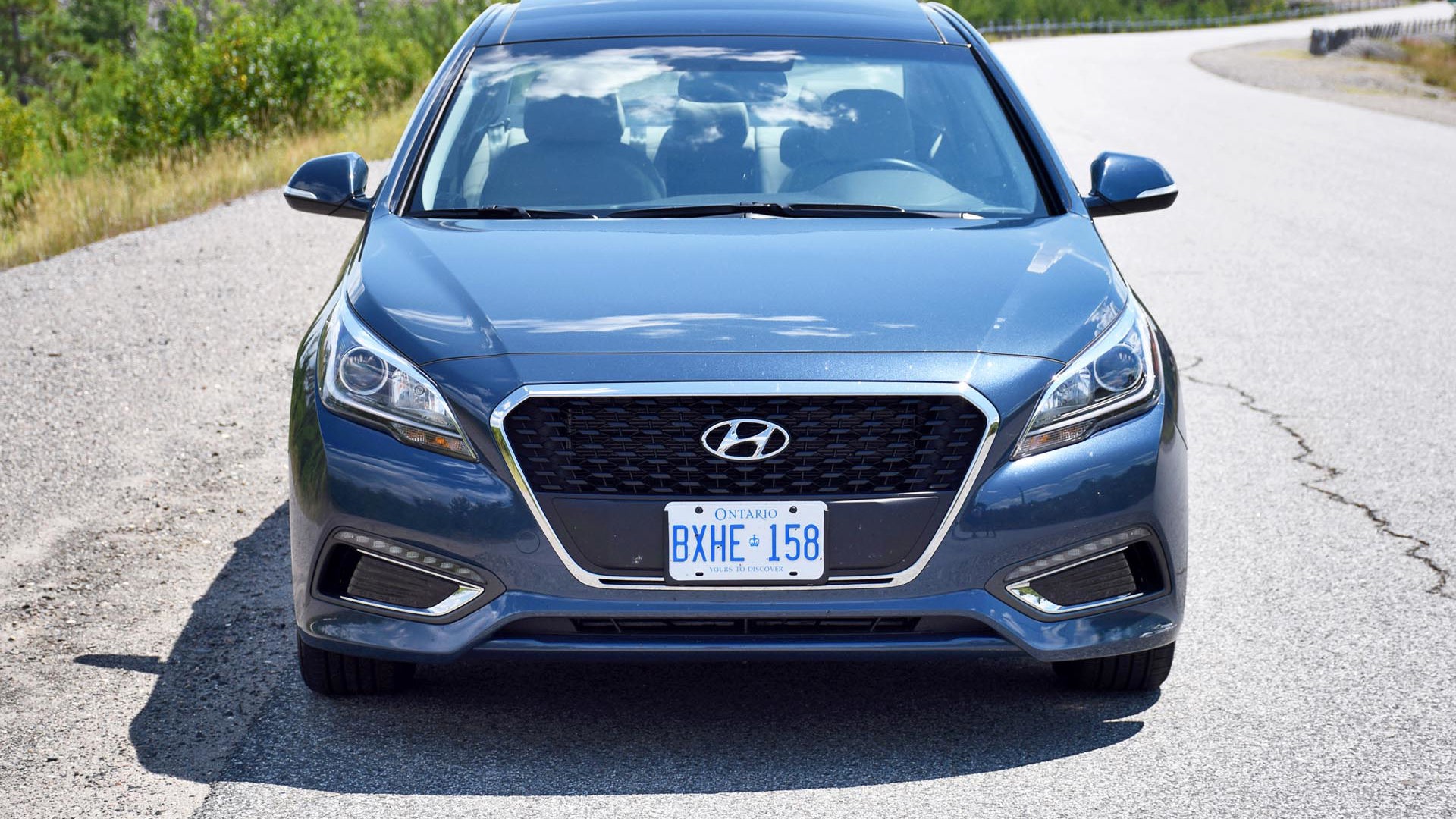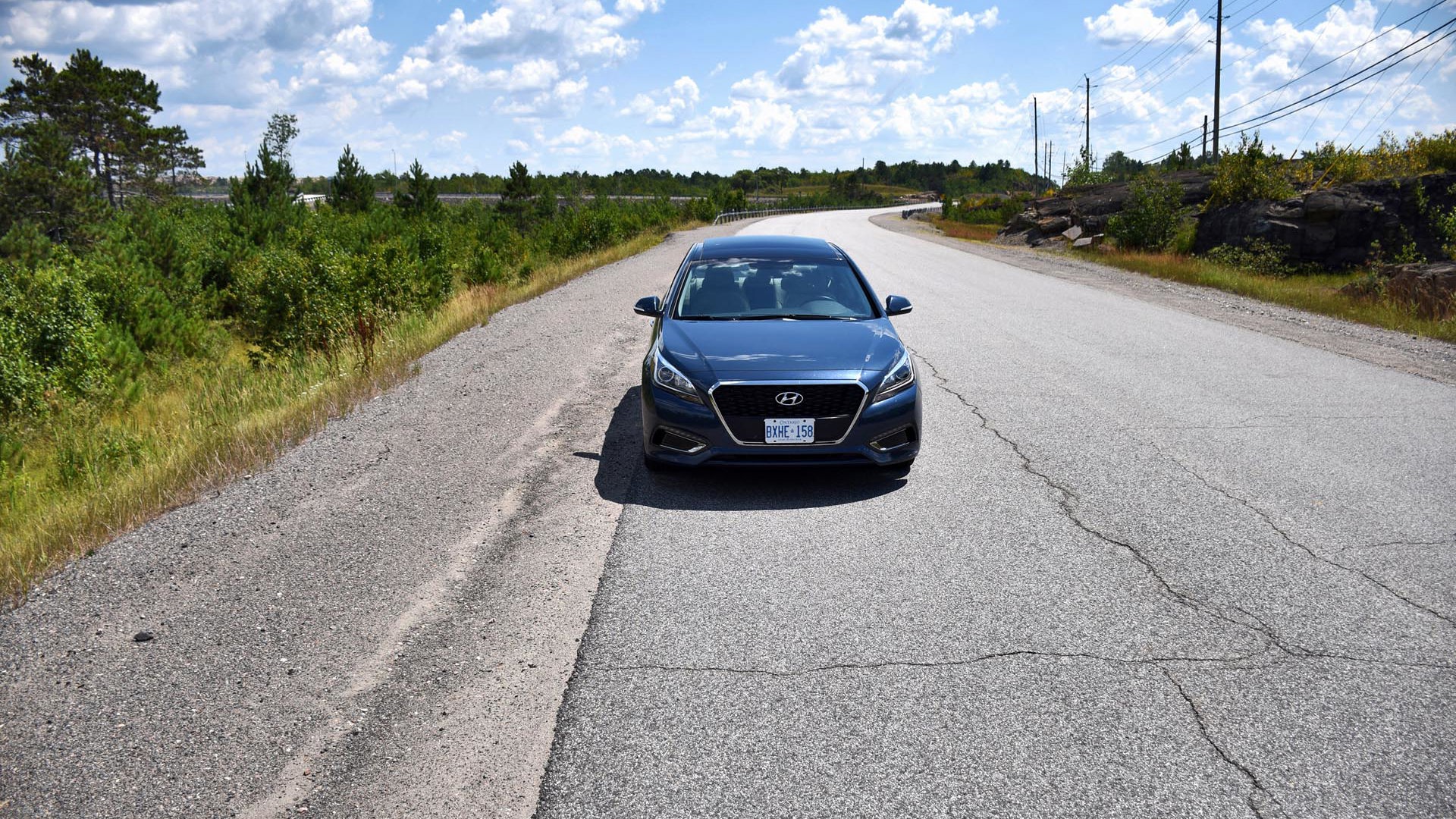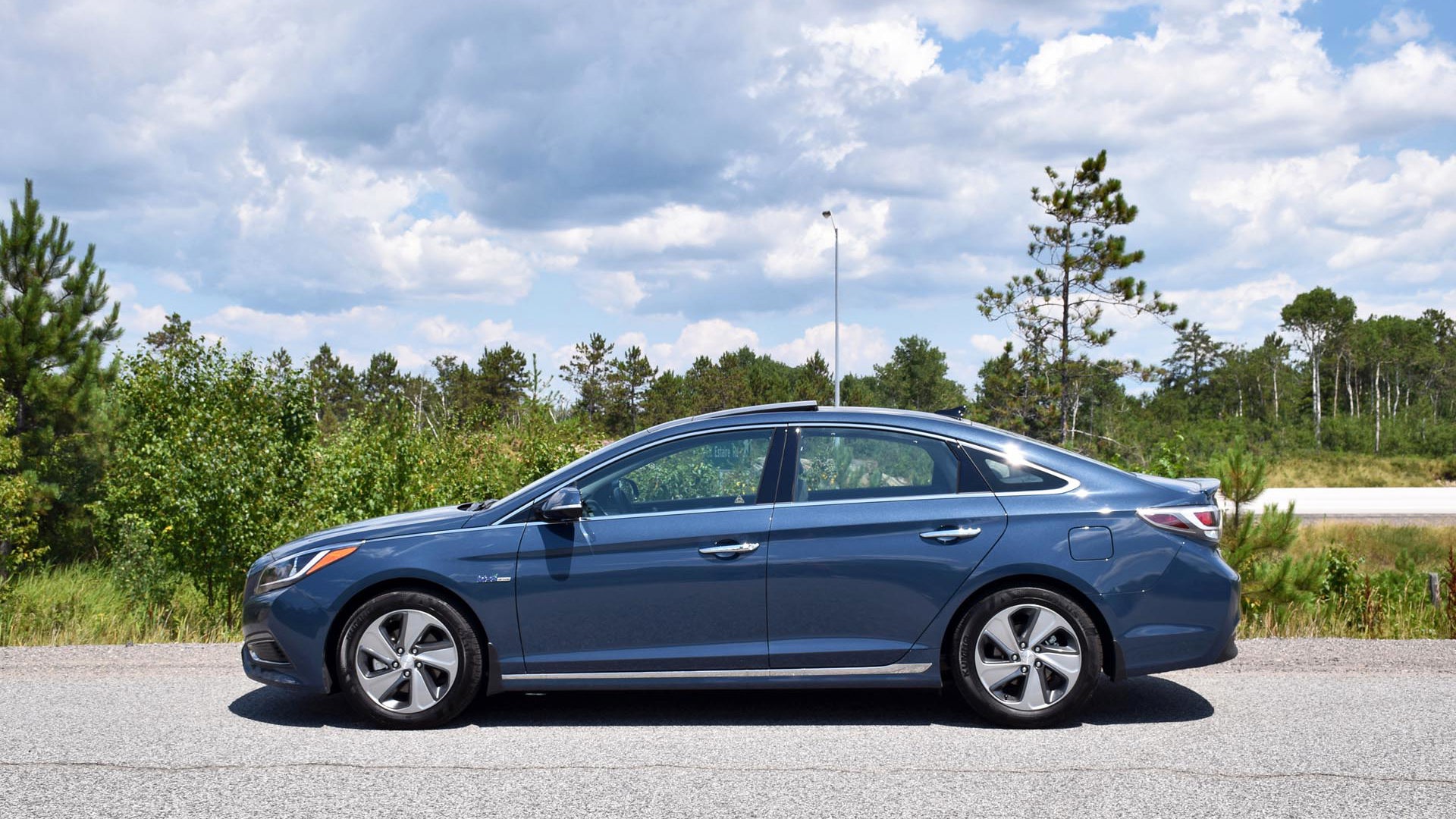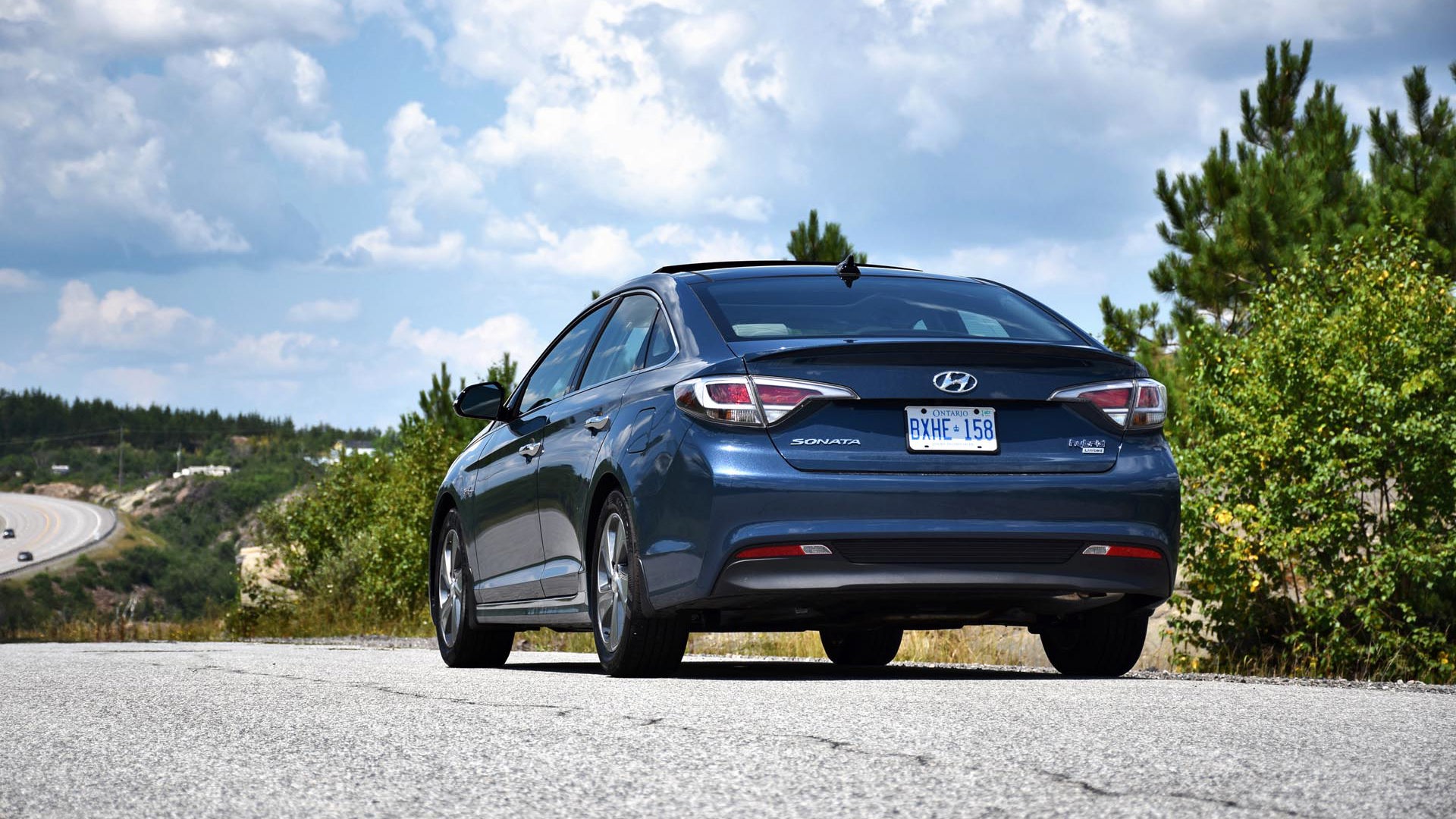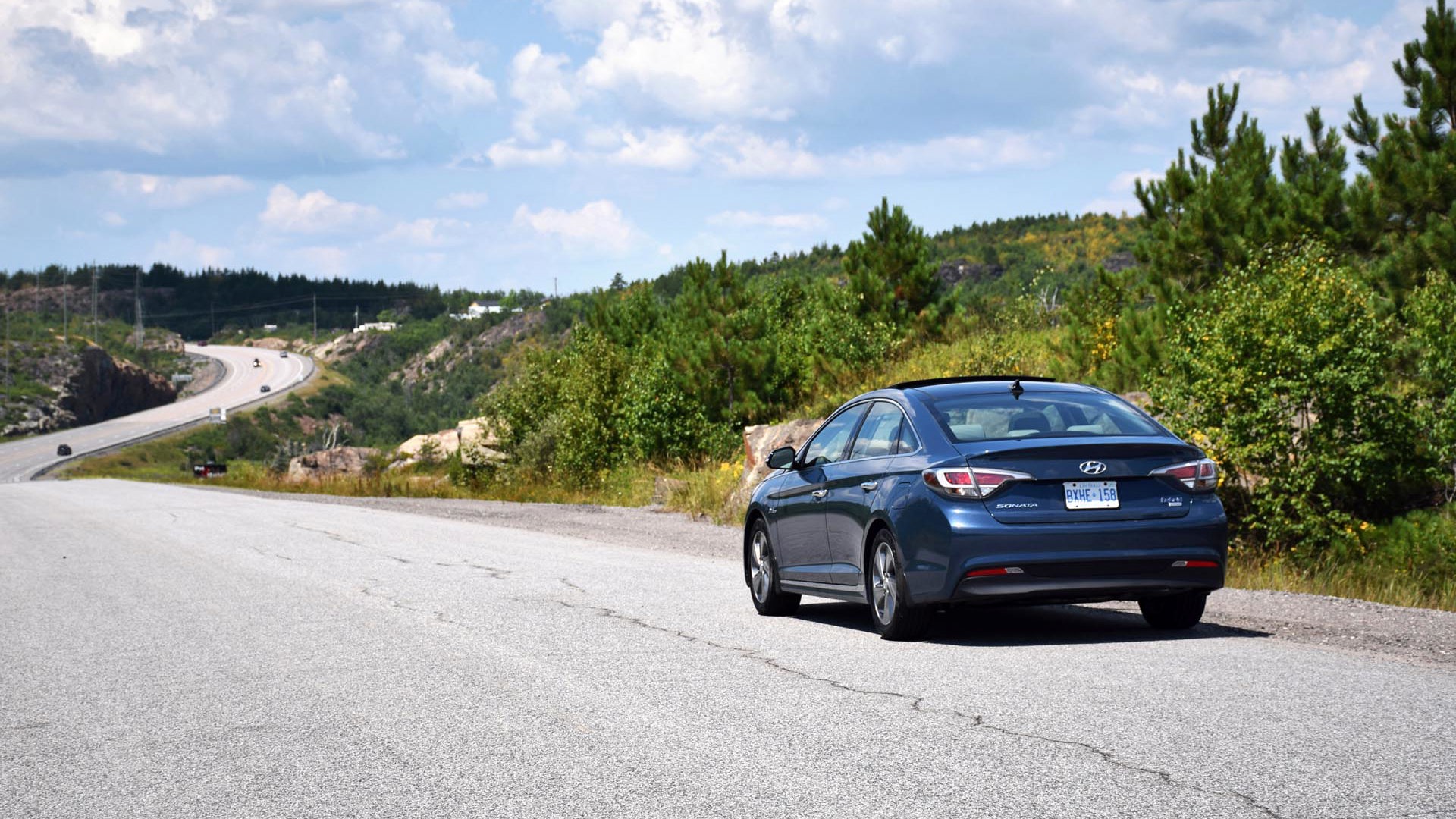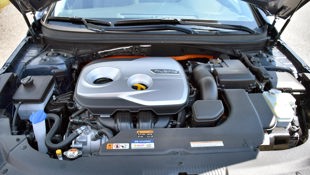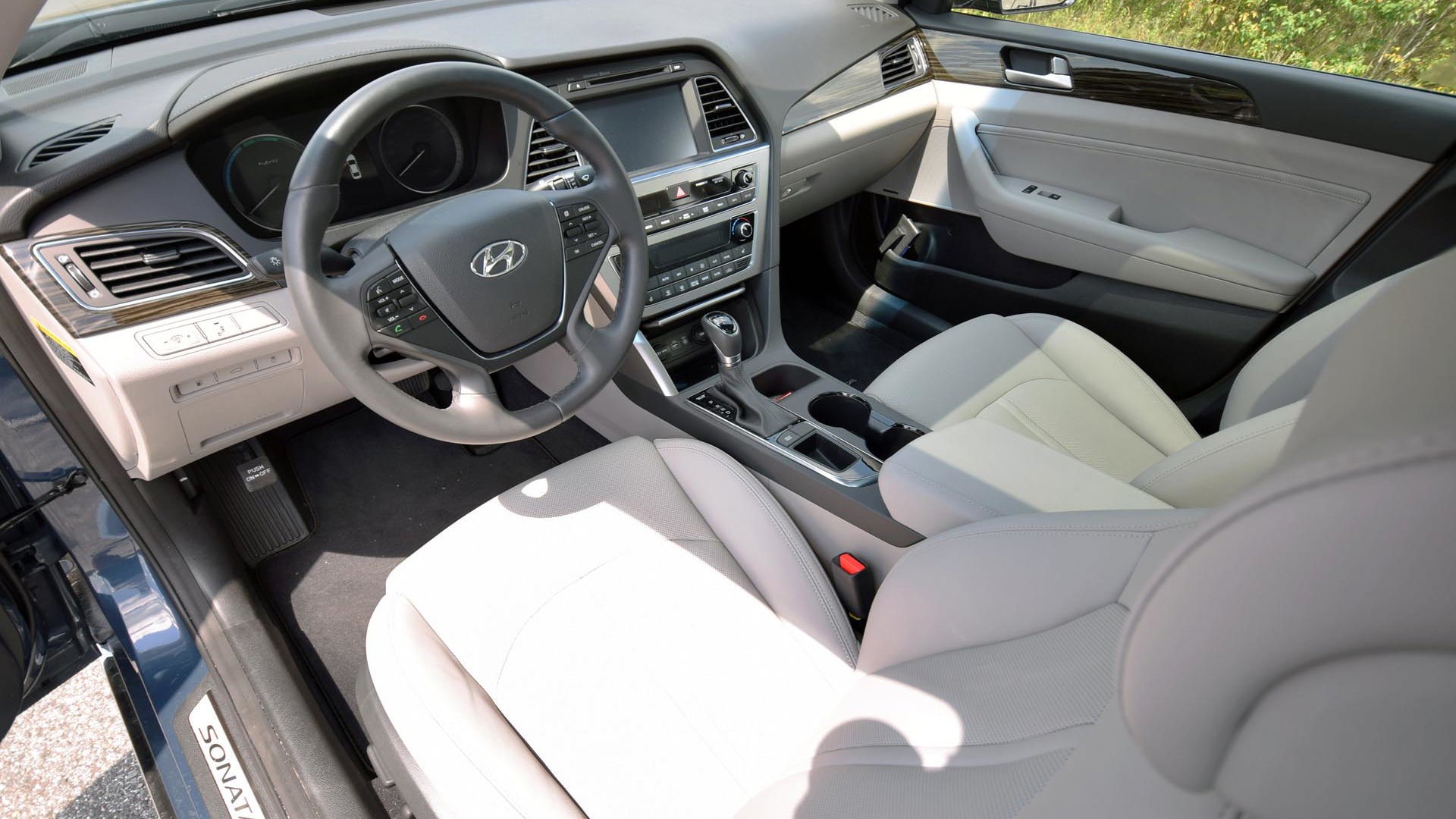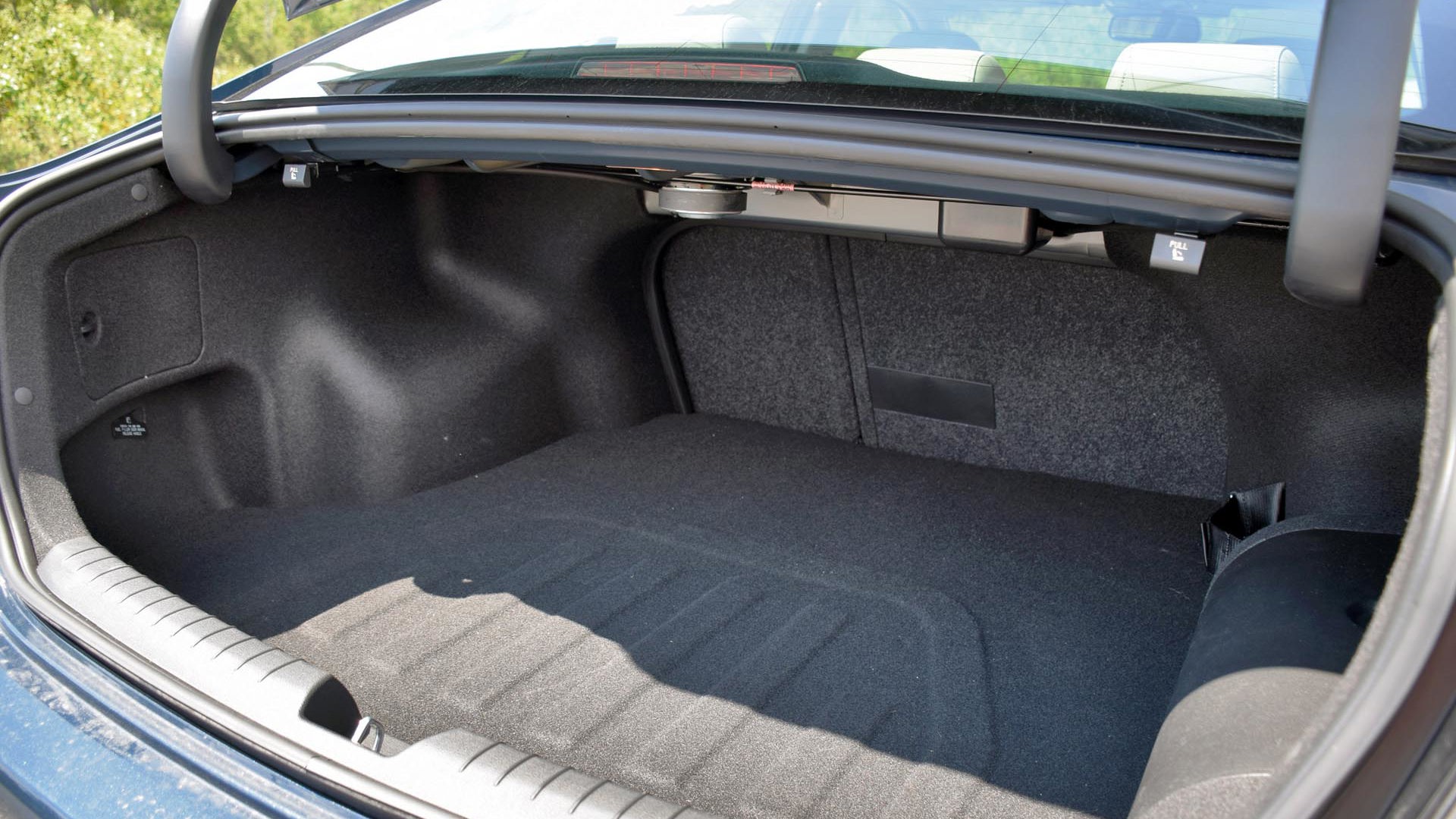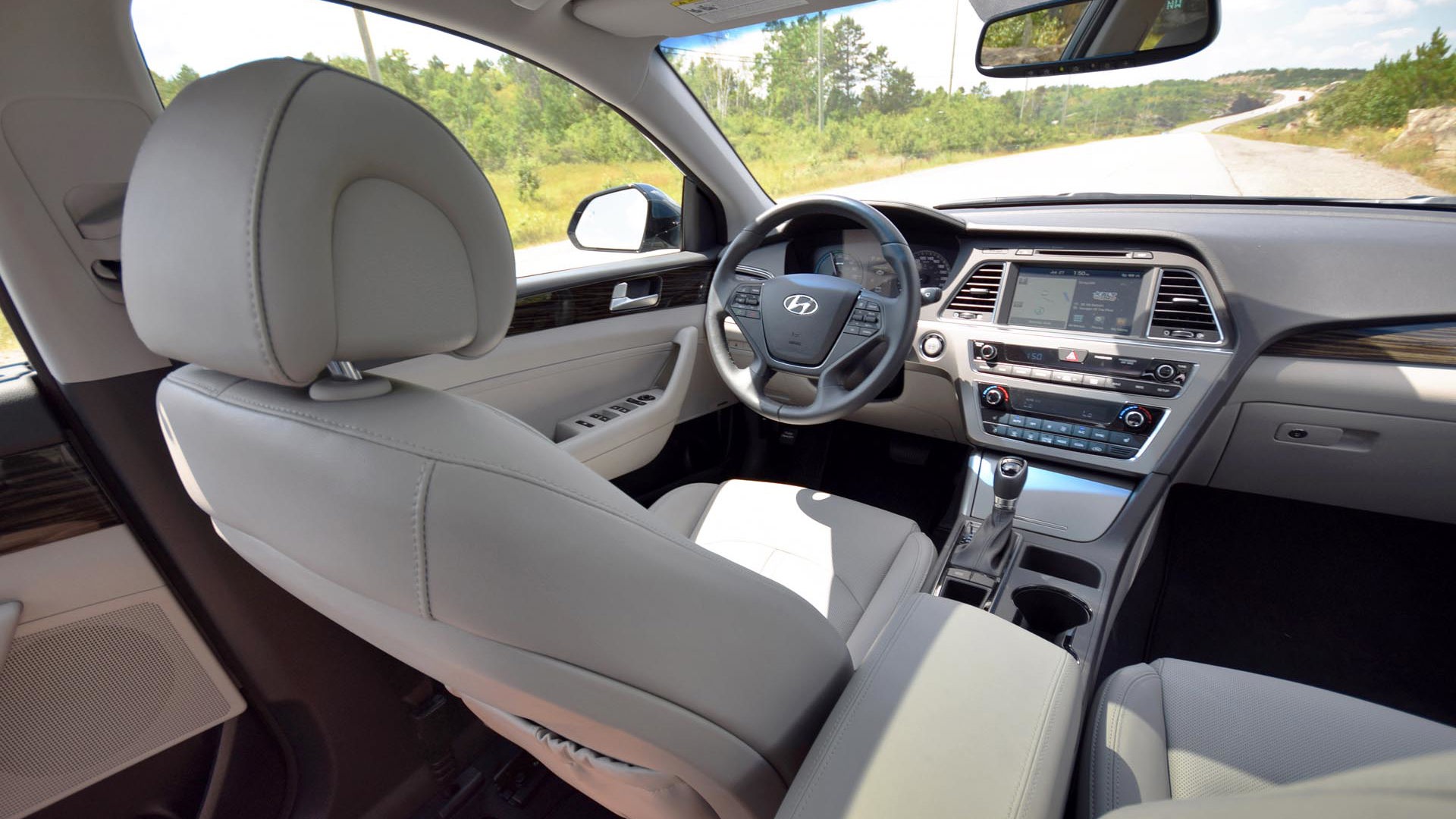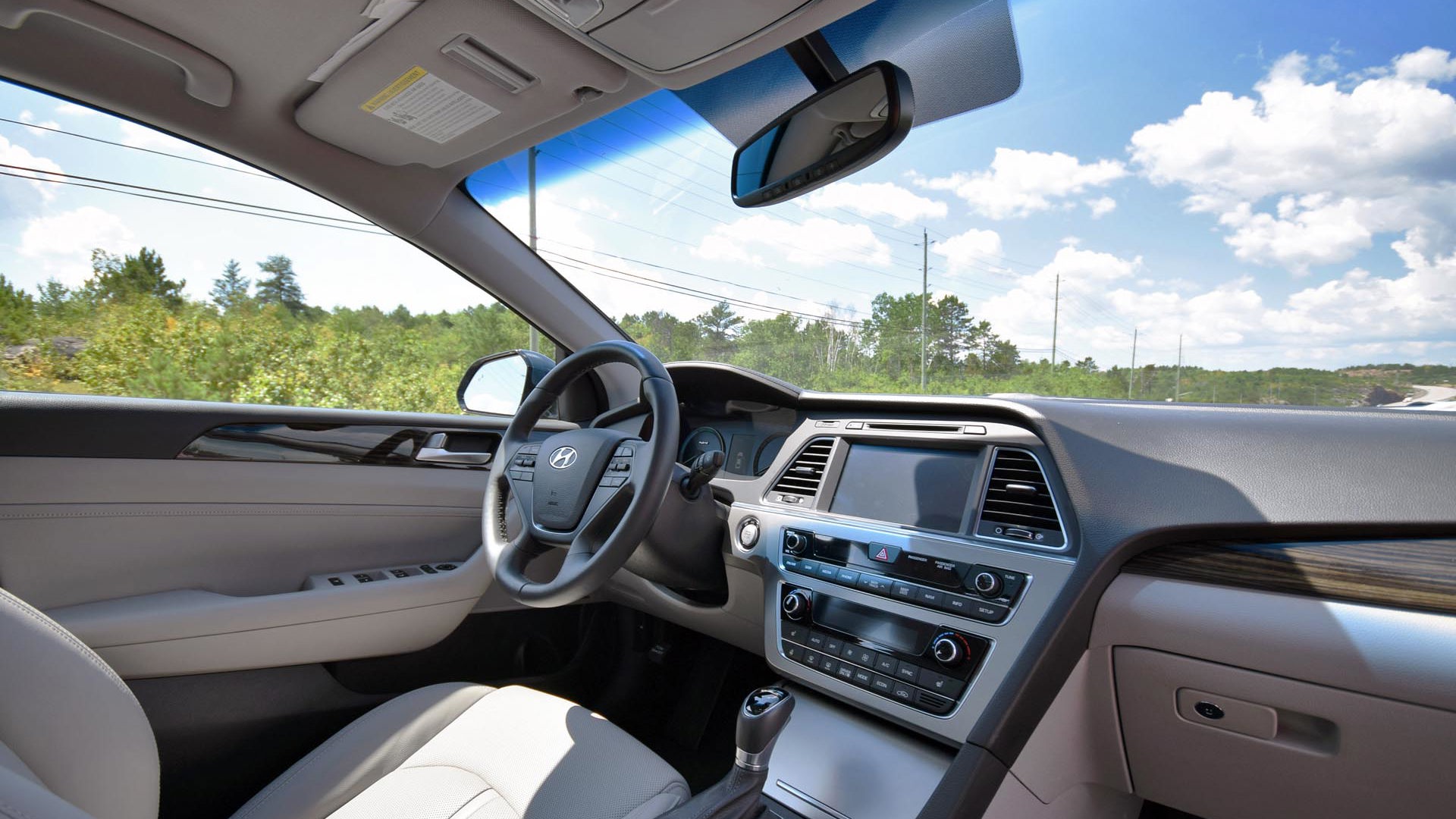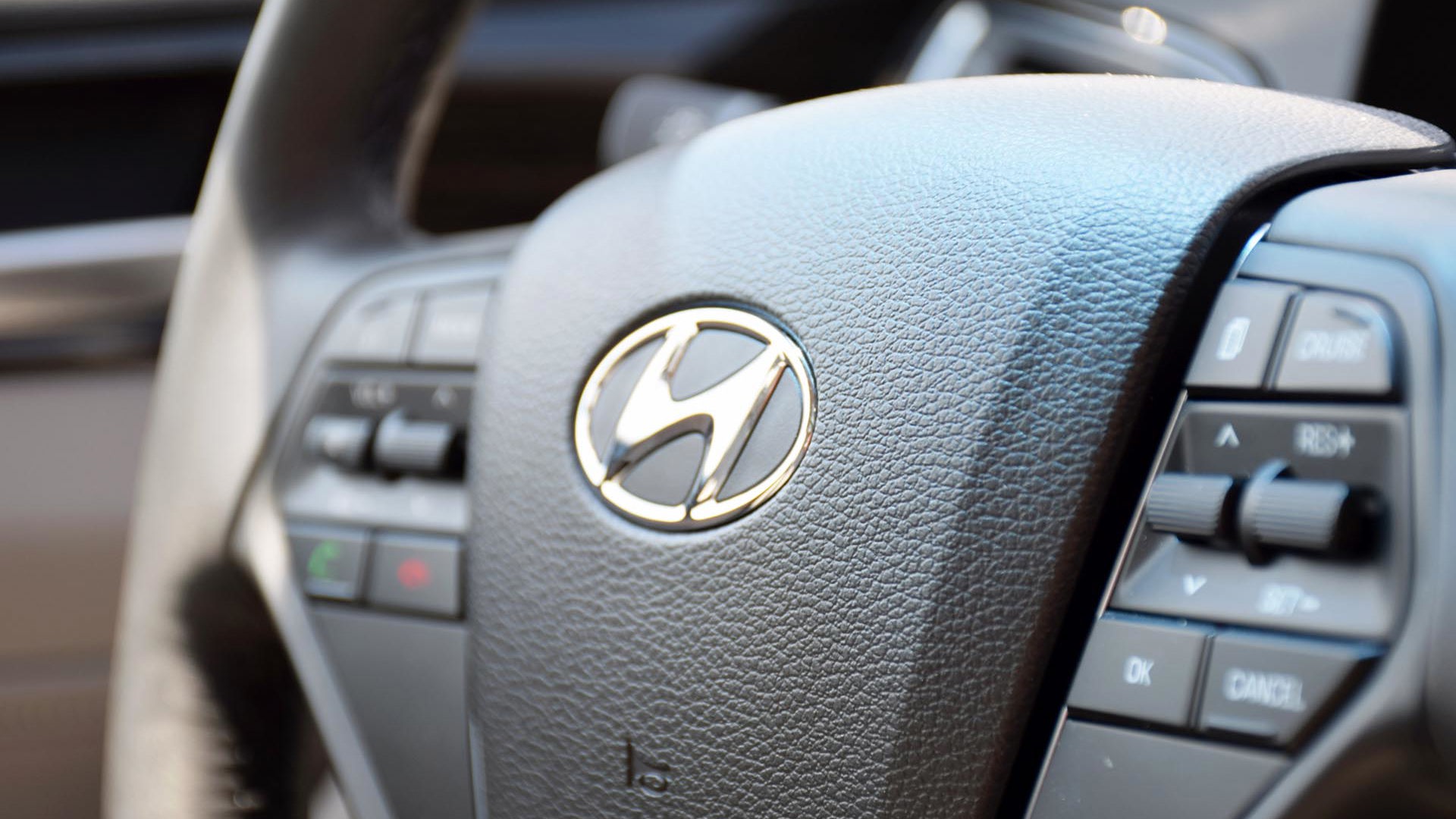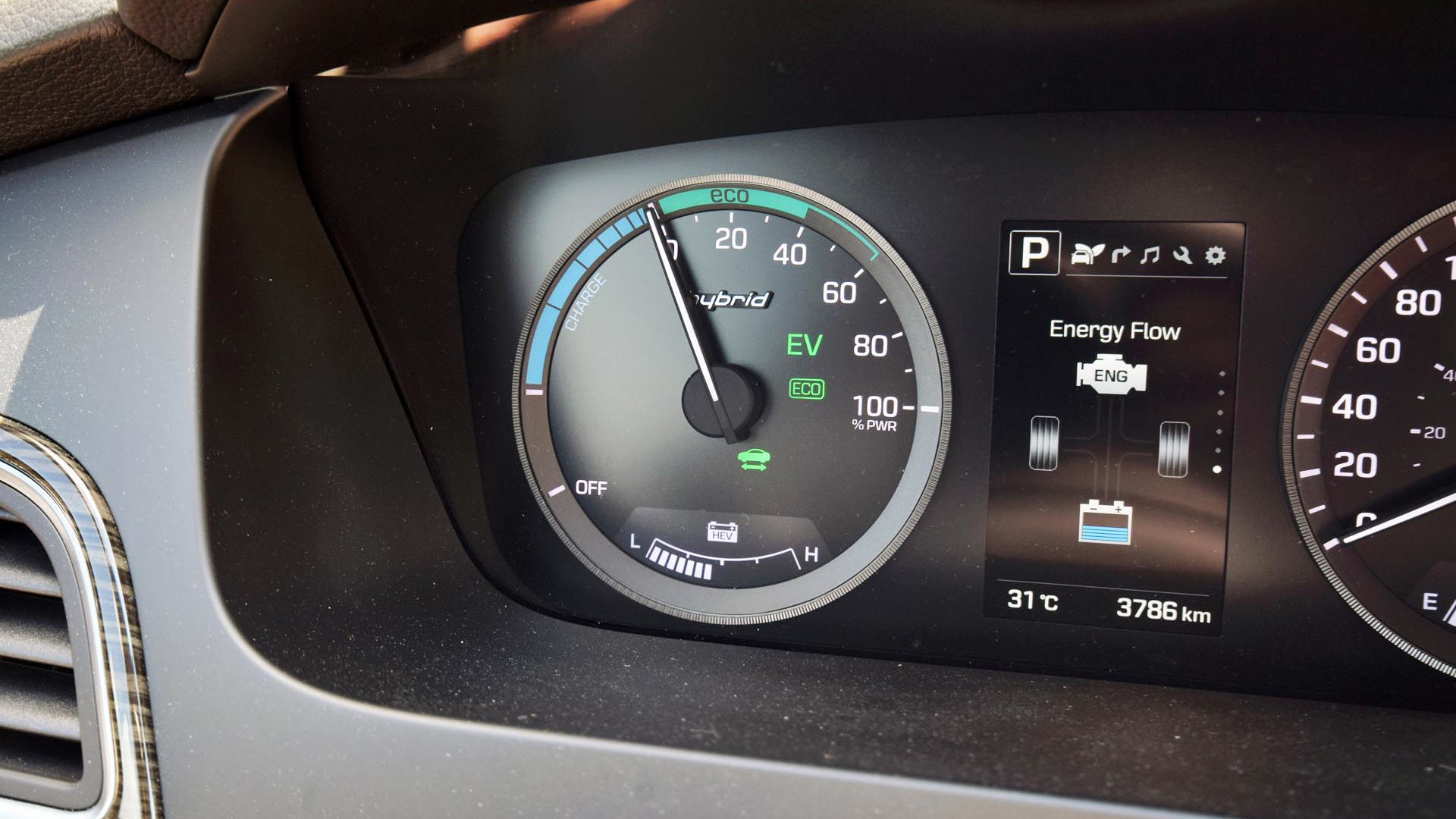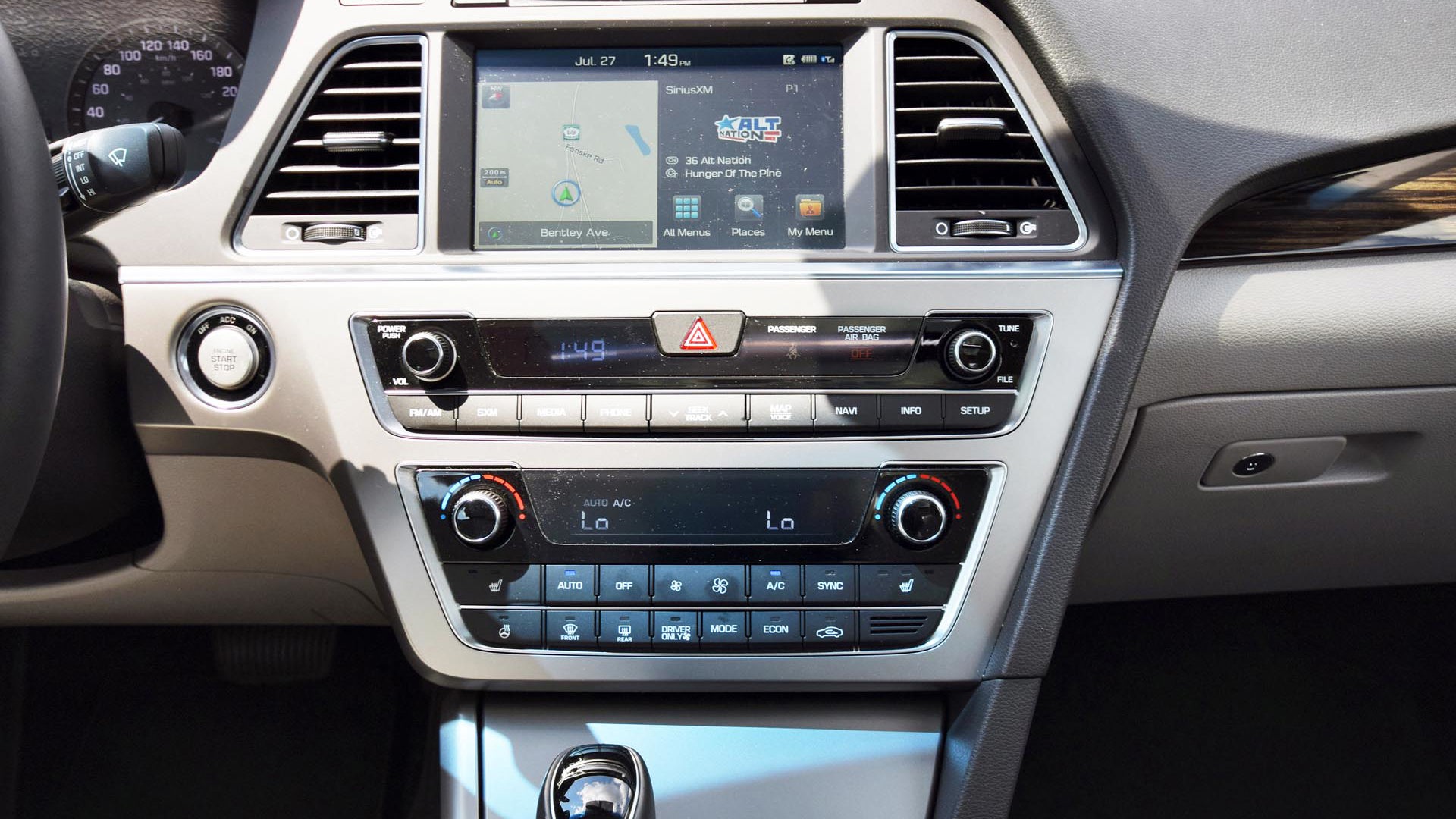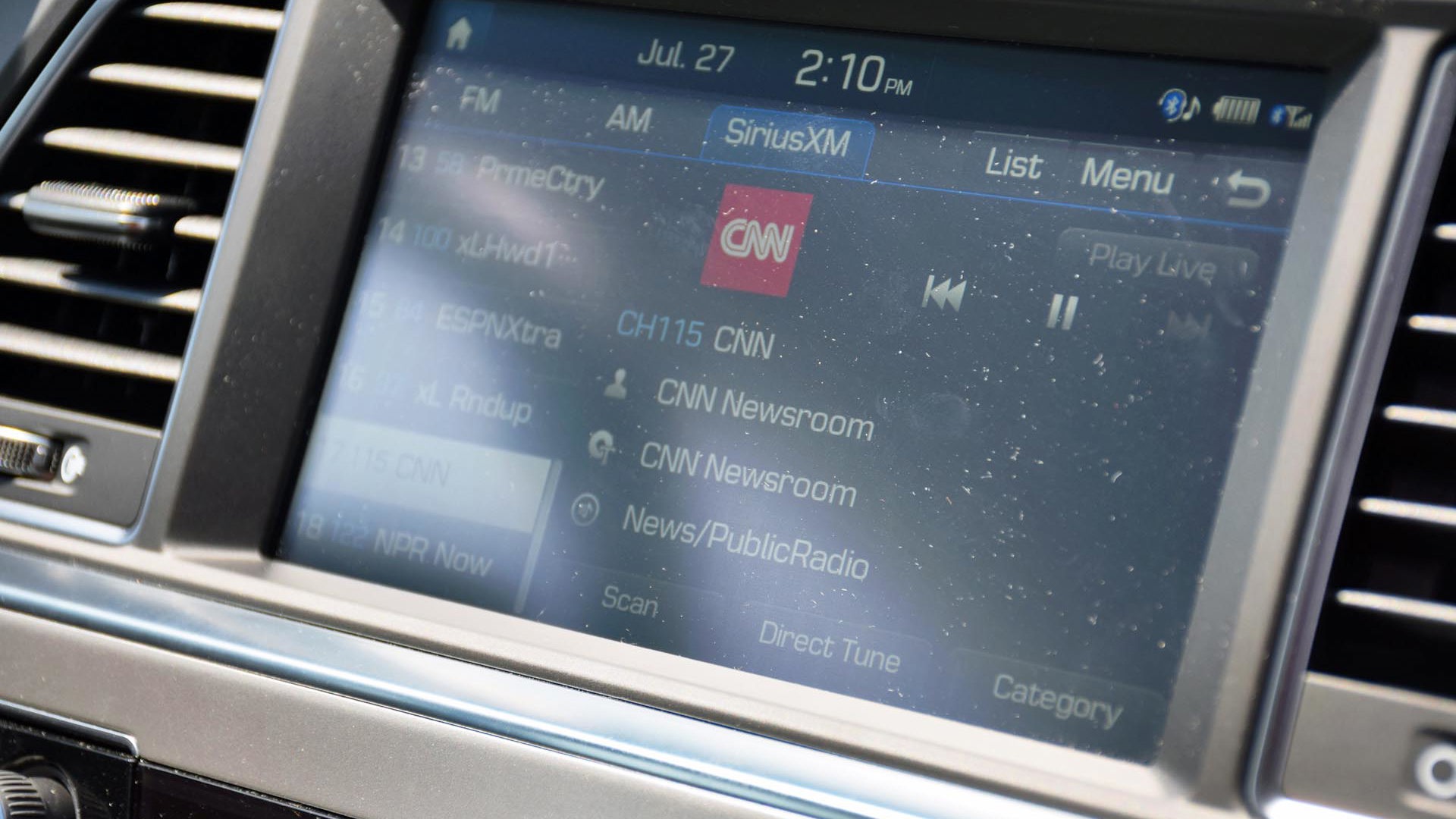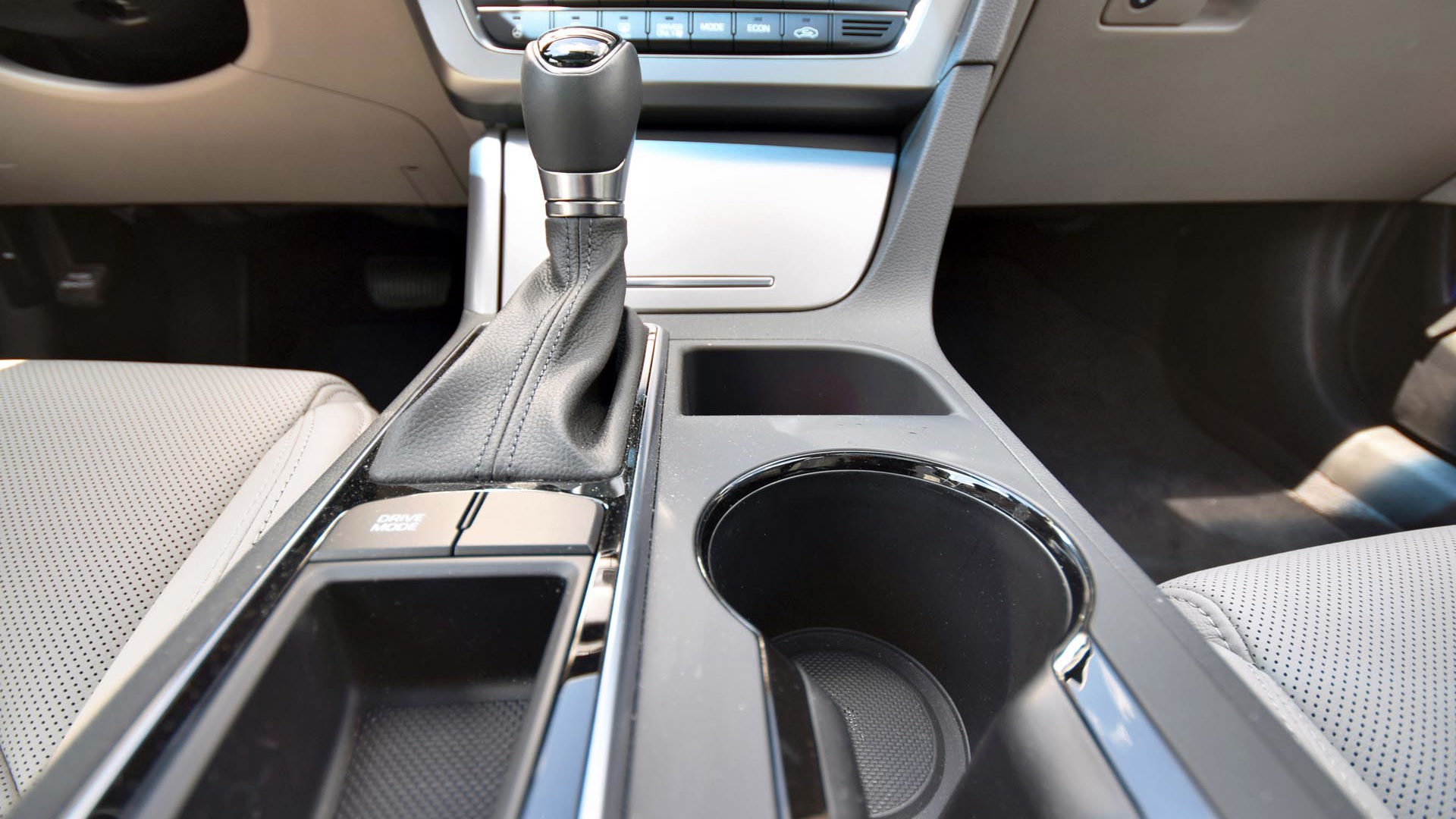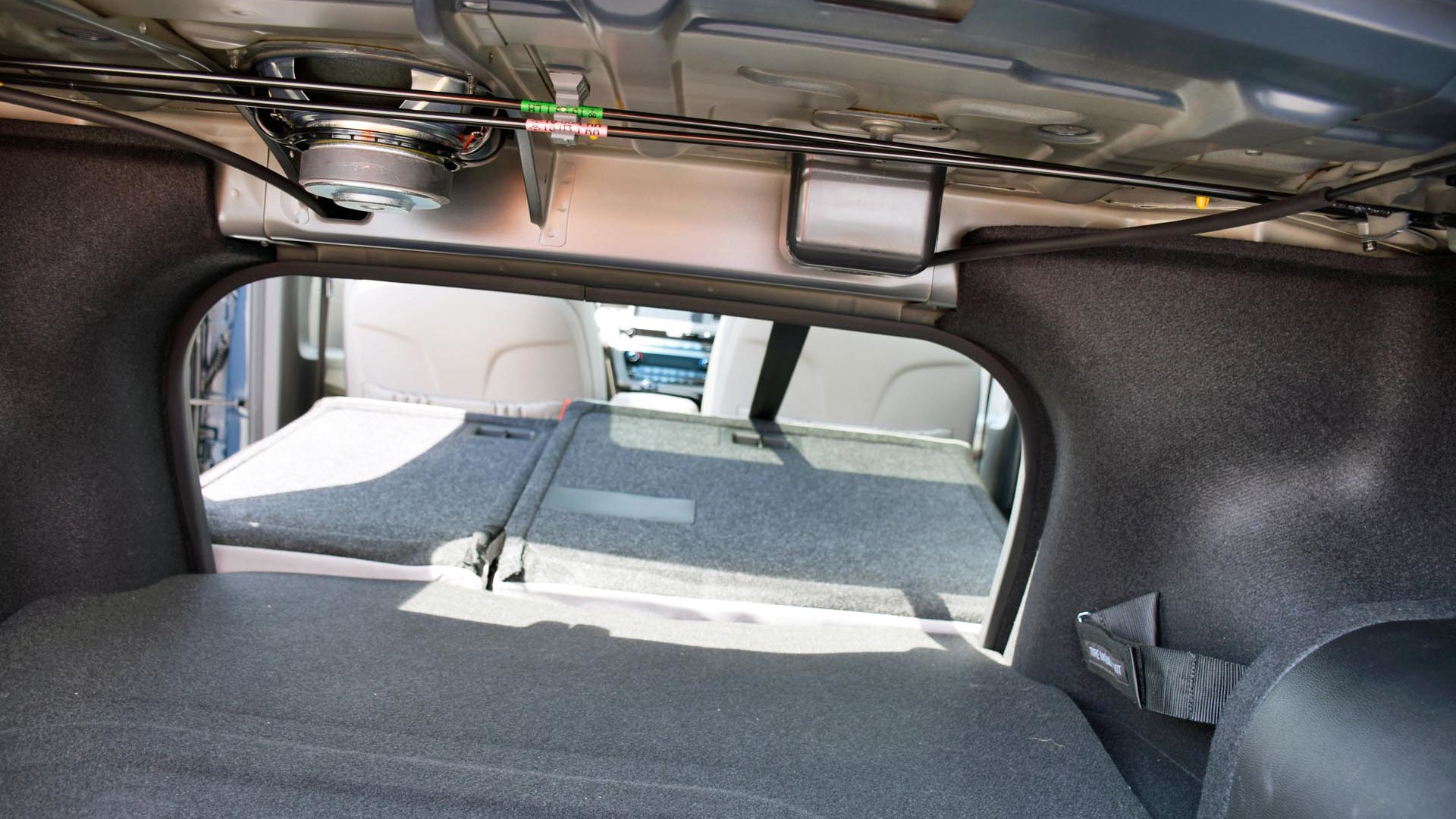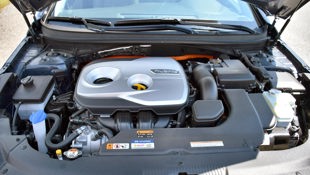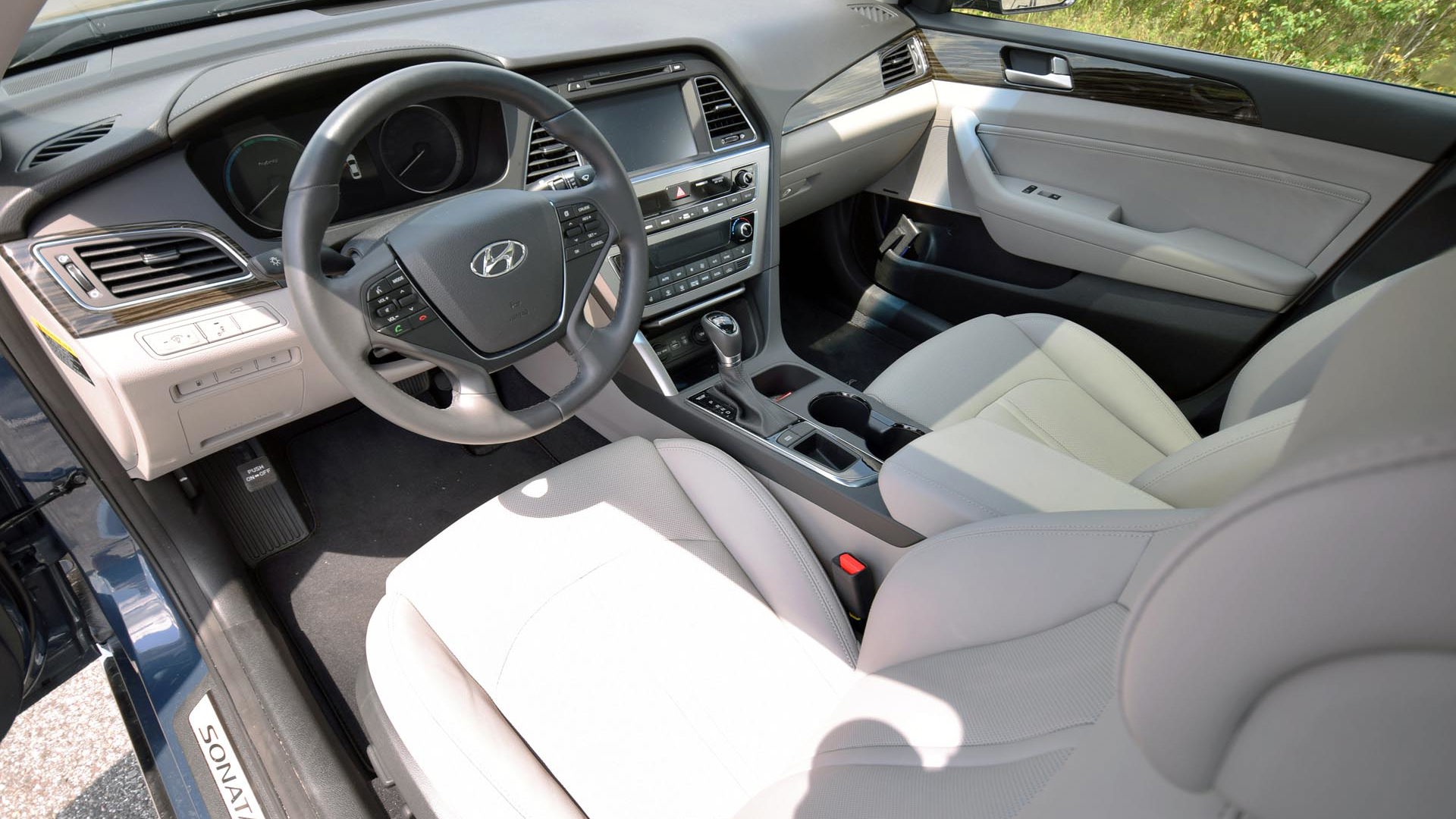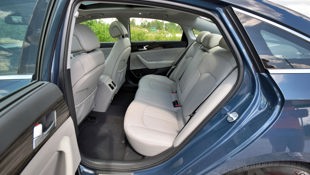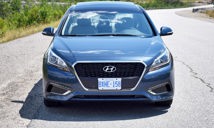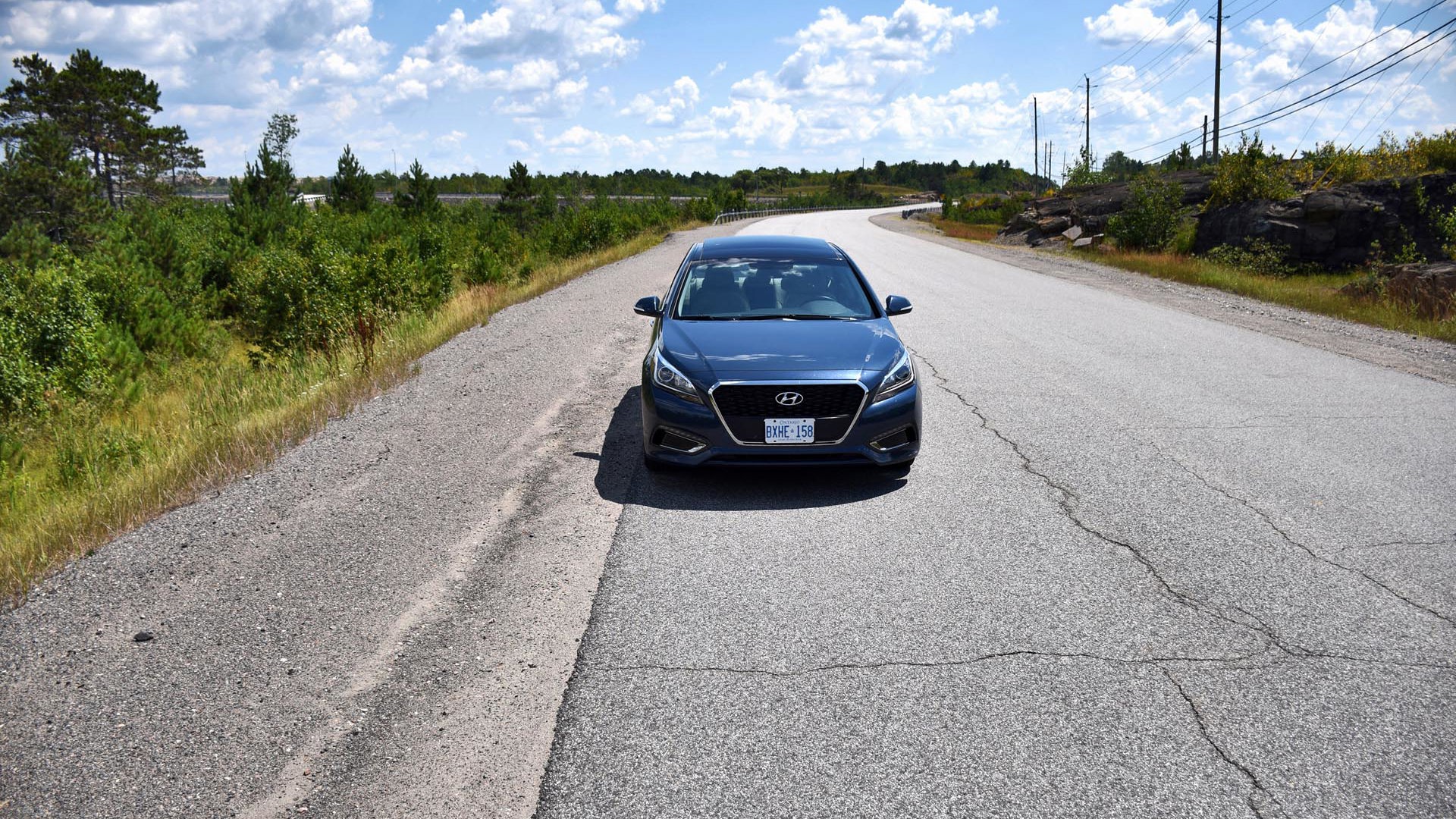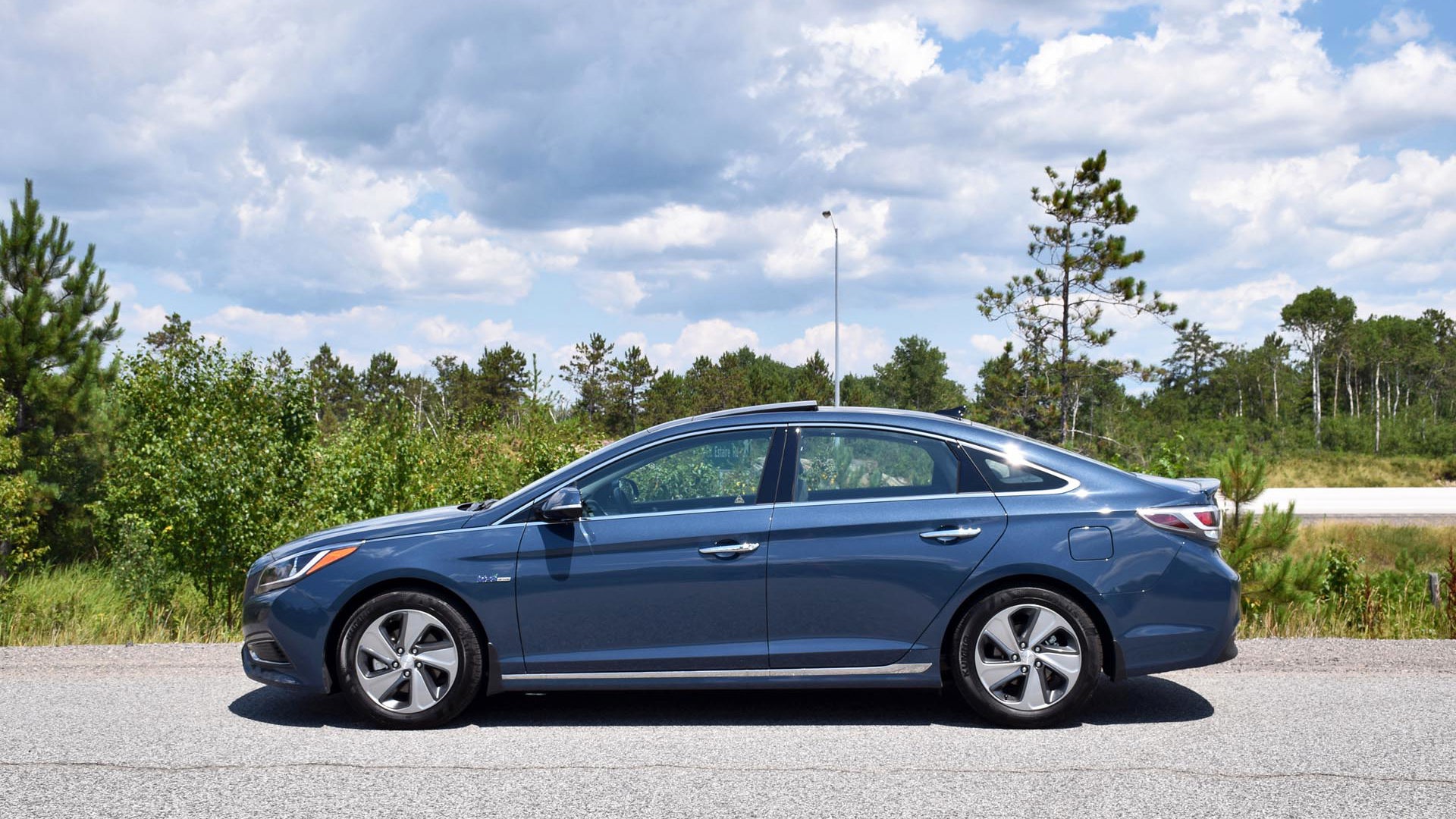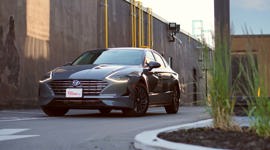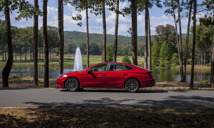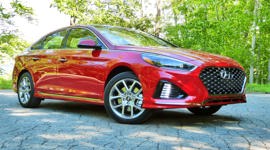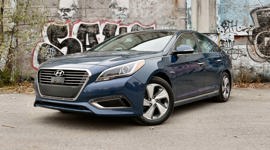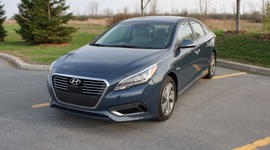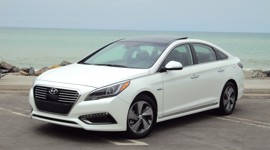 AutoTrader SCORE
AutoTrader SCORE
-
EXTERIOR STYLING8/10
-
INTERIOR8/10
-
PERFORMANCE6/10
-
COMFORT8/10
-
FUEL ECONOMY8/10
It’s a squirm. Or maybe a shift, or a wriggle: the sensation, in a hybrid car, of the gasoline and electric propulsion systems combining, blending or switching between the power sources currently driving the wheels, as clutches clamp and decouple, polarities switch and reverse, electrons stream to and fro, and motors and generators come online and off.
Hybrid powertrains engineered not to feel like hybrid powertrains help sell hybrid cars to shoppers not interested in compromise.
Despite these happenings beneath the skin of machines like the 2016 Hyundai Sonata Hybrid, engineers have reduced the perceptible sensation of all of it to a mere squirm, felt occasionally. If you’ve got the climate control fan on, or some Kenny Loggins playing at even a little volume on the radio, you won’t hear the whirring of the motors, or the grumble of the gas engine, kicking in and out, when you’re driving gently to moderately.
Hybrid powertrains engineered not to feel like hybrid powertrains help sell hybrid cars to shoppers not interested in compromise. Sonata Hybrid even has a six-speed automatic transmission, like, with gears, instead of the syrupy CVT gearbox that typically finds itself in this sort of fuel-saver.
And so, again, the second hybrid-powered generation of the Sonata seeks to move Hyundai further into the mental vault of hybrid family sedan shoppers, partly, by integrating their hybrid technology into a package that’s compelling for reasons beyond fuel consumption and emissions figures.
For instance, building on the strengths of the latest Sonata, the 2016 Sonata Hybrid gets a first-rate interior. The Limited-grade tester got plenty of space, enhanced with a light color palette for a feeling of openness and room. The massive glass roof overhead adds to the effect. It’s a spacious, airy and pleasant place, complete with generous rear seat space, especially in terms of legroom. Two 5”11 or taller occupants could sit behind each other with heaps of room to spare.
Up front, the flat and far-ahead dash is clean and tidy, free of bulbous lumps and gaudy curvatures, and showcases a big and responsive touch-screen, front and centre. It all sits far enough away from front-seat occupants to enhance the feeling of spaciousness notably, with only a slight reach for controls as the consequence. There’s a clean and cohesive look to the styling elements, interfaces and controls, and to the blending of high-tech readouts, buttons, and a smattering of wood trim, aluminum and leather dispatched towards an upscale atmosphere.
Ride quality and a feeling of robust sturdiness back the premium feel. Premium dampers and a new, considerably-stiffer body, as well as the Sonata Hybrid’s smaller wheels and plump tires, work towards good manners on virtually any surface. On smooth highways at speed, the car is quiet, stable, and feels heavy and smooth, even if the steering is too light and lazy to lock the car into its position within its lane. Around town, even on the worst roads available to your writer, the suspension never felt overwhelmed or flimsy, nor did it demonstrate significant deterioration in refinement.
Extreme rough surfaces coax some extra sound effects from beneath the car, though in all, shoppers prioritizing comfort first and foremost will be impressed on a test-drive. Here’s one that absorbs and neutralizes bumps, rather than crashing over them. Further, road noise is kept to a very dull roar, and wind noise presents itself only as an occasional lick at the door seals at speed.
Then, there’s that powertrain. Fire up the Sonata Hybrid, and a subtle beep tells you it’s ready to roll, absent the sound of a starter motor, as there isn’t one. Slip the shifter into gear, and the car moves off without a peep. Delightfully complicated-looking power-flow instrumentation lets drivers keep an eye on the current blend of gas and electricity driving the wheels, with a special ‘ECO’ range highlighted on the power meter for visualization of optimal throttle application. Readouts to monitor and report on your driving style, including one that breaks your driving down by percentage into Normal/Economical/Aggressive, provide further insight. I landed at 47/42/11 percent over the course of a week.
As it was with the last-generation Sonata Hybrid, drivers can expect to experience the benefits of the Hybrid powertrain on every drive. Light throttle output, thanks to the high-torque electric motor, is pleasing, and helps glide the Sonata out of merging lanes and up hills without much need to downshift. The gas engine is a little noisy when called upon via full throttle operation, though the refinement and quietness when driven gently should more than appeal to light-footed drivers.
Hyundai says their latest battery technology leapfrogs the competition in numerous ways, and allows the Sonata Hybrid to operate in its fuel-free Electric Vehicle (EV) mode, more of the time. On my test drive, I saw the car dip frequently into EV mode, even at a good clip on the highway. There’s something smugly satisfying about cruising at 115 km/h without burning a drop of fuel, even if only for a moment or two. Or while cruising gaslessly through the drive-through for your morning coffee. Or while driving down your street at low speeds.
These moments come often and consistently on every drive, with the little green “EV” logo confirming when the powertrain is generating a fuel-free moment of driving that will combine with many others to increase range and decrease consumption. It’s just a little green light-up icon, but it remains a nice touch to help visualize and reinforce the return on investment for those who dropped extra money on a hybrid.
My overall test average, measured by hand, landed at 6.5 l/100 km, with the trip computer showing 5.8 l/100 km. I trust my measurements more than the computer readout. You may not.
These figures came after some 1,200 km, about two-thirds of which were on the highway at a good clip, and of which none were in the sort of stop and go driving where hybrids shine. Further, a mid-summer heat-wave of sweatiness and clamminess saw plenty of AC usage at full blast, without the gas-saving AC ECON mode selected. I rarely used the ECO drive mode either.
Translation? I achieved good mileage without really trying, from a hybrid that doesn’t really feel like one. If you’ve got a lighter foot than me (likely), or you frequently encounter low-speed, stop-and-go traffic, expect to do even better. This consumption figure is a virtual tie with the Volkswagen Passat TDI for where, and how, I drive. Take that as you will, as your figures will vary.
Typical hybrid car niggles still apply. The brakes, blending regenerative motor braking with pads-and-rotors braking, feel inconsistent and gooey at times, and the throttle, especially in the ECO drive mode, can feel lazy and delayed. The SPORT mode comes closer to a natural feel. Steering snobs won’t appreciate the often over-assisted and pudding-like feel to the steering, either, though SPORT mode heavies it up, a little.
Other notes? Sonata’s new hybrid battery, which is smaller and more power dense, now sits beneath the trunk floor, effectively taking the usual hybrid sedan cargo-space compromise and fist-punching it right in its filthy yap. The resulting full-function trunk can accommodate a generous Costco run or a weekends worth of camping gear, no problem, and rear seats fold down fully when required, which is unheard of in a hybrid sedan, too. Storage space also abounds near the driver – including numerous generous cubbies at hand, and numerous power outlets in said cubbies. Staying recharged and organized on the go here is a cinch.
End of the day, Hyundai’s newest Sonata Hybrid, once again, eliminates most hybrid car compromises, while working hard to maximize the return on its owner’s investment in hybrid-car powertrain hardware. With effortlessly good mileage, great ride quality and a cabin that hits above its weight be sure to consider this one against comparable versions of the Camry, Accord and upcoming Malibu.
| Warranty: 5 years/100,000 km; 5 years/100,000 km powertrain; 5 years/unlimited distance corrosion perforation; 5 years/unlimited distance roadside assistance; 8 years/160,000 km hybrid components Competitors: |
| Model Tested | 2016 Hyundai Sonata Hybrid Limited |
|---|---|
| Base Price | $33,799 |
| A/C Tax | $100 |
| Destination Fee | $1,695 |
| Price as Tested | $35,594 |
|
Optional Equipment
None
|
|
